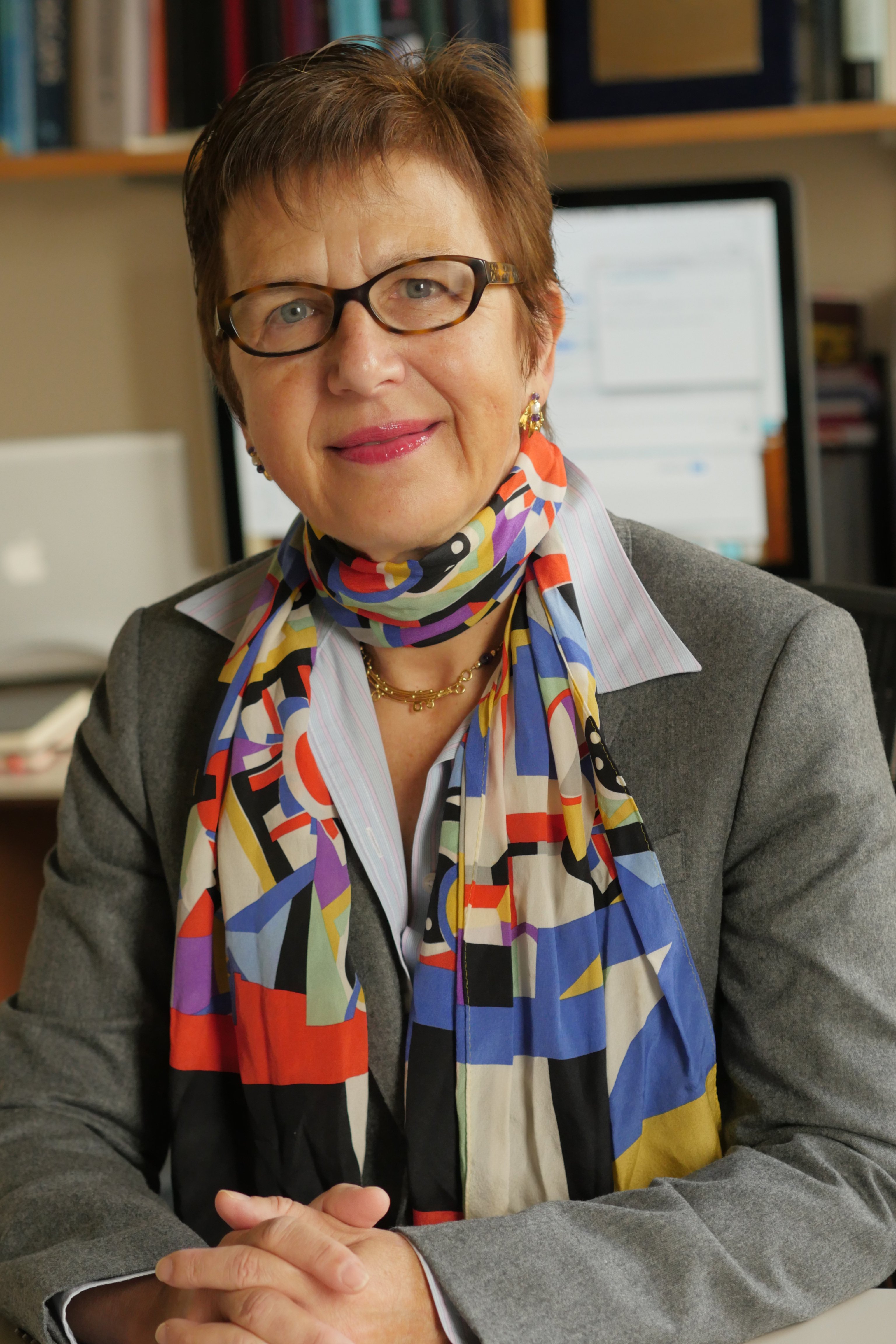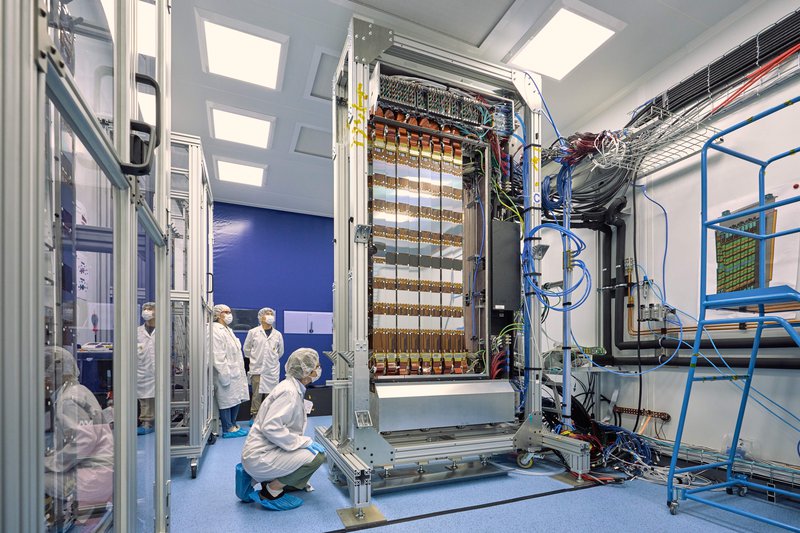Physics Professor Receives NSF Grant for Work at CERN
Marina Artuso receives a grant for the next step of ongoing work with Large Hadron Collider “b” upgrades at CERN Laboratory in Switzerland.

Physics professor Marina Artuso has been awarded a three-year National Science Foundation (NSF) grant for her project, Development of UltraFast High Granularity Modules for Timing Layers for the LHCb Upgrade 2 and Future Collider Calorimeter Applications. Her co-principal investigators on the project are professors Steven Blusk, Matthew Rudolph, Rafael Silva Coutinho, Tomasz Skwarnicki and research professor Raymond Mountain.
Endeavoring to answer the universe’s biggest questions can involve working with very exotic—and incredibly tiny—particles. Specifically, in the case of the Large Hadron Collider “b” (LHCb) at the CERN laboratory in Geneva, Switzerland, exotic subatomic particles containing beauty (“b”) quarks. These quarks are one of 6 quark flavors that—along with gluons, which bind quarks together— make up the hadrons that Artuso and her team observe in the laboratory. They roamed the universe freely only a very short time immediately after the Big Bang. And the way they behave and interact, what happens when they combine and after they decay, might just hold the answers to how the microworld works—and ultimately how all the matter in our universe came to be.

Physics professor Marina Artuso inspects the first half of the detector in LHCb at the CERN Laboratory. (Courtesy: CERN)
Professor Artuso has been working with a multinational team at CERN since 2005, and she has been the Syracuse team leader since late 2021. Professors Artuso, Blusk, Rudolph, Silva Coutinho and Skwarnicki lead many complementary research efforts within the LHCb experiment, taking data at one of the four interaction points of the LHC proton-proton collider, a 17-kilometer-circumference tunnel in which proton beams are made to collide: The intense collisions produce concentrated energy that mimics the energy generated when the universe was first created. They spent several years working to design and construct the Upstream Tracker (UT), a detector created to contribute to a precise imaging of the particle debris that results from these collisions; the current grant is going toward the development of an upgrade to the UT—an even more sensitive detector.
“The phenomena we are trying to discover are unfortunately very elusive,” Artuso explains. “We can smash things with higher and higher energy, or become more sensitive, to [access] more data.”
In layman’s terms, the detector to be upgraded, known as the electromagnetic calorimeter, will be improved to be able to differentiate between events that happen all at once, effectively on top of one another. “Like with old cameras when you keep taking pictures,” Artuso explains, “and you have different pictures superimposed on the same piece of film [producing a] blurred image. You can use the time at which the image occurred to try to disentangle the various pictures. [We are trying] to develop detectors which can disentangle the time at which different photons were produced.”
It's a long-term effort; the detectors Artuso and her team are working on now are expected to be installed in the mid-2030s. For this phase of the project, the grant provides funding for two graduate students; there are also opportunities for undergraduates, and this summer they’re hoping to generate some projects suitable for local high school students as well. “It’s a very important component of [our] educational mission,” Artuso says, “to have [students] working with us. They are exposed to state-of-the-art research in physics … can connect what they are doing in class with what will happen in future, and can see machinery they would interact with if they go to work in the [electronics or semiconductor] industries. These are valuable skills.”
While the full breadth of real-world implications and practicalities of the LHCb research remains to be seen, developing techniques for faster detectors and faster-processing electronics is a goal with countless applications in industry. As one example, “[when you have] faster processing in medical imaging, such as PET scans …you don’t have to [expose patients to] as much radiation.” Advanced detectors are likely be useful in fields from biology to archeology.
Beyond those goals, however, Artuso makes the point that understanding the microworld is also a purely intellectual activity. It’s knowledge for its own sake. The LHCb experiment has so far published 700 papers and many more are in the pipeline — and every step reveals another layer of understanding. “In the very origin of the universe,” she says, “there was a combination of matter and antimatter — particles which were equal except for their electric charge — and they kept on disappearing into light and reappearing. But now the anti-particles are gone, and mostly we have matter. We don't really understand how it happened. We are hoping to find some pieces of evidence that will allow us to develop a better theory.”
Shining light on these and other mysteries of the universe is not fast work, she notes, but it pays to be patient.
